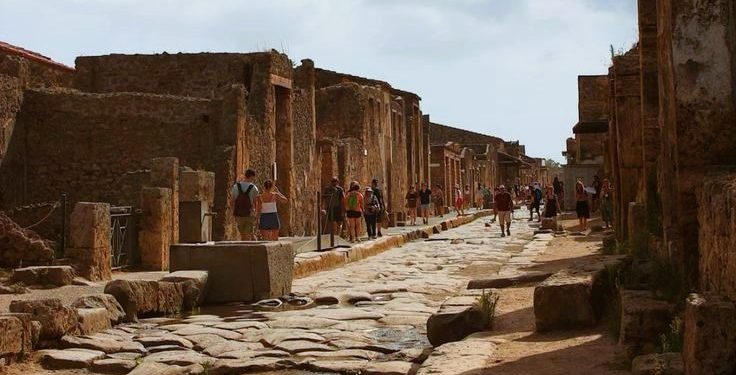Jakarta, Indonesia Sentinel — In a bid to tackle the issue of overtourism, Italy’s iconic Pompeii Archaeological Park is set to join other popular sites in implementing visitor restrictions. Starting next week, the park will cap its daily visitors at 20,000 and introduce personalized tickets.
According to a report by The Independent on Sunday November 10, the decision comes after authorities recorded a record-breaking summer, with over 4 million tourists exploring the ancient Roman ruins. The surge in foot traffic prompted park officials to take action to preserve the site’s delicate infrastructure.
Gabriel Zuchtriegel, the park’s director, stated that the daily visitor count has already been averaging between 15,000 and 20,000. The new cap aims to prevent overcrowding, which could have detrimental effects on both visitor safety and the preservation of this unique and fragile cultural heritage.
“We are working on various projects to reduce human pressure on this site, which is at risk of damaging both the safety of our guests and the cultural heritage itself,” Zuchtriegel said.
Starting November 15, entry tickets to Pompeii will be limited to 20,000 per day. The new system will also require visitors’ full names and include staggered entry times, especially during peak summer months, to better manage the flow of tourists.
In addition to these measures, park management is encouraging visitors to explore other ancient sites linked to Pompeii by offering free shuttle bus services. This initiative, known as ‘Greater Pompeii,’ includes locations like Stabia, Torre Annunziata, and Boscoreale.
Indonesia’s Endemic Wildlife Faces Extinction, These are 5 Most Critically Endangered Species
“These measures are part of our strategy to manage tourist flows and enhance safety, as well as to adjust the overall visitor experience,” Zuchtriegel explained. “We aim to promote a more relaxed, sustainable, and enjoyable form of tourism, free from overcrowding, while also spreading visits across the surrounding UNESCO-listed areas rich in cultural treasures yet to be fully discovered.”
Post-pandemic, tourist numbers in Italy have continued to soar, surpassing pre-pandemic levels seen in 2019. The influx of visitors has not only strained local infrastructure but also disrupted the lives of residents and damaged ecosystems, contributing to pollution from increased transportation.
Besides Pompeii, other popular Italian destinations like Venice, Portofino, Capri, Rome, Sardinia, Florence, and the Alpine region of Trentino have already introduced various forms of visitor restrictions or tourist taxes to curb the impact of overtourism.
(Raidi/Agung)


























